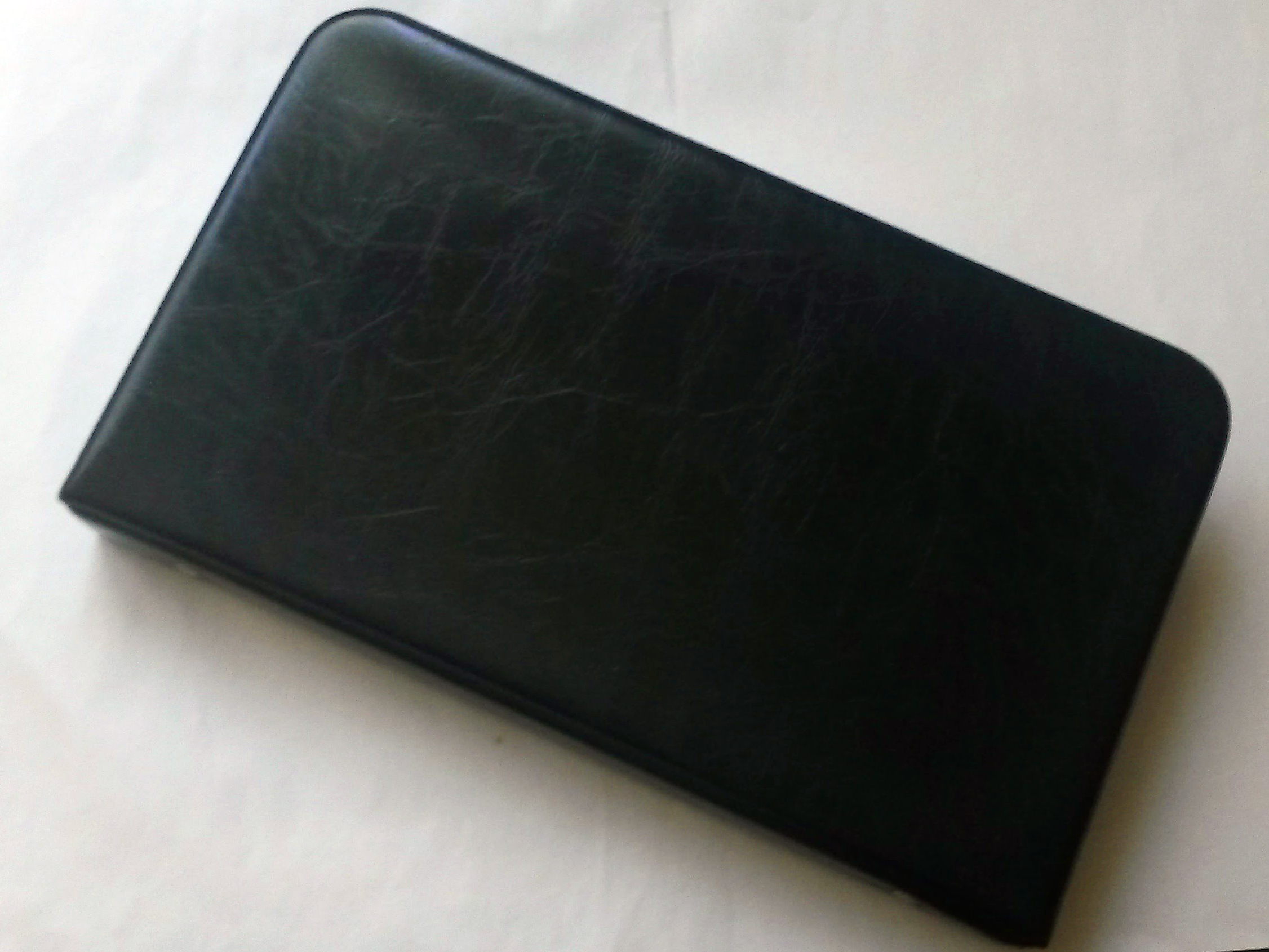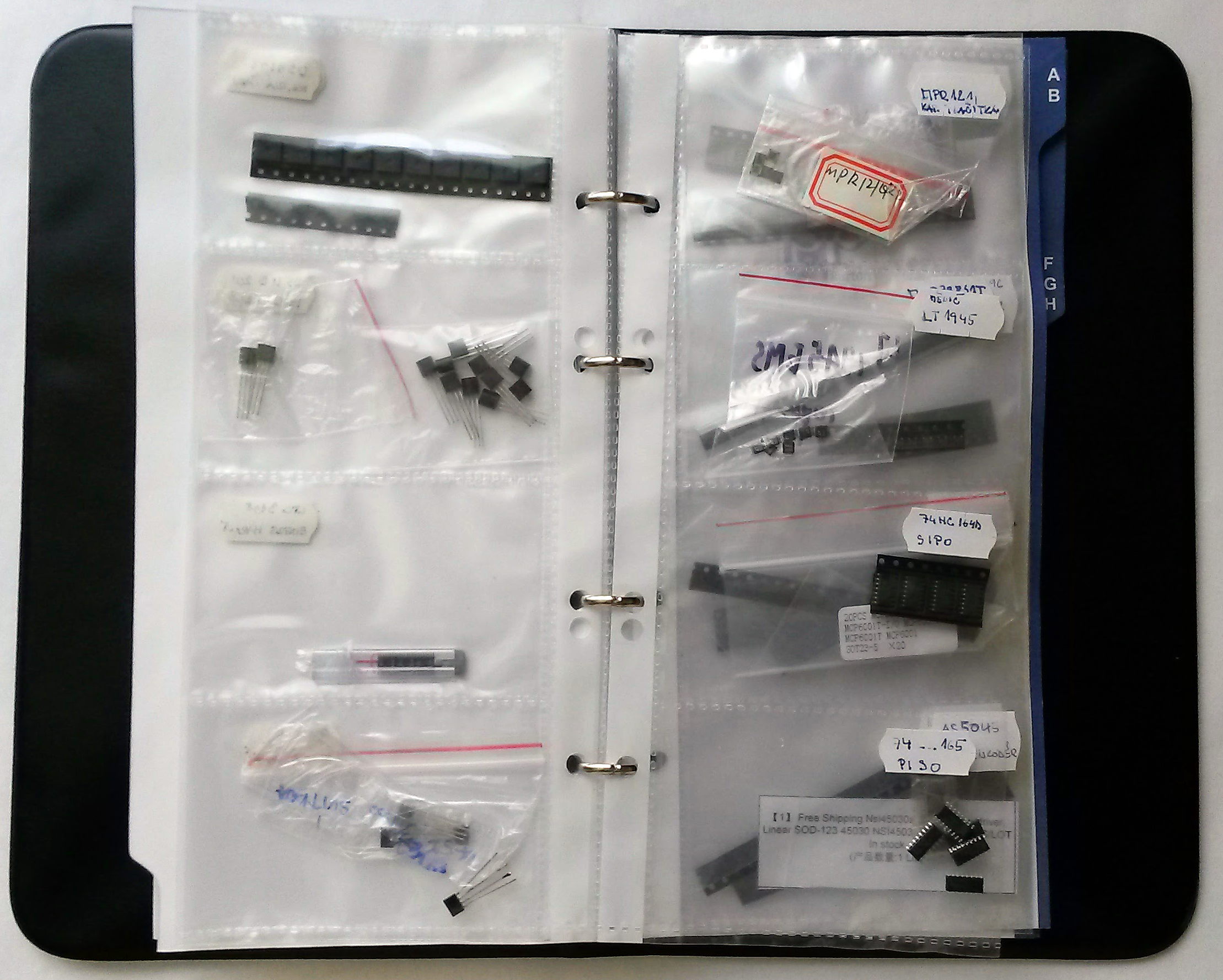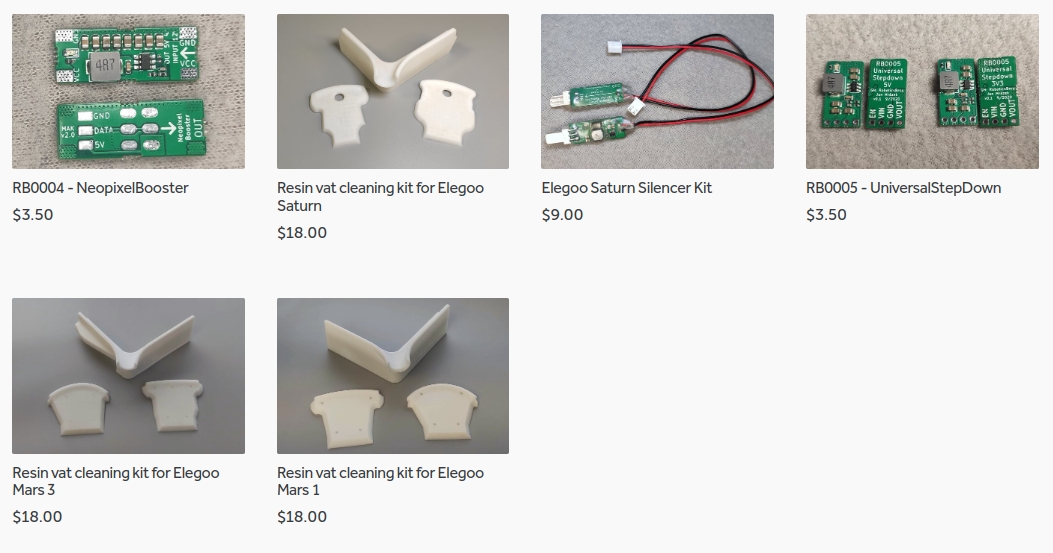I use SMD components in my projects whenever it is possible. I like when things are compact, look professional and also I hate drilling PCBs. Also many modern components aren’t available in other packages. However with bright sides of SMD components comes the dark side — the storage.
You need several hundreds type of components to do something meaningful. The components are small, come in similar packages usually with no labeling (capacitors, inductors, SOT, QFN — all of them have no, or at least not fully descriptive label). Putting them in a one large bag isn’t a good idea. Once you loose track what kind of component is it, you can throw it out. Sometimes it can be measured, but usually the time doesn’t worth the money.
I used to keep my components in the original carrier tape, usually with a handwritten label. All the tapes were in several plastic bags. After my collection of components grew up a little bit, this kind of storage was unusable. Lookup a component of a particular type was time consuming, reading small, often blurred hand-written labels, was a pain. Maybe you know it by yourself.
So about a year ago, I bought an ordinary business card manager. It has transparent plastic sheets with 4 slots each. It is quite similar to specialized so-called “sample books”, which are nearly the same, however the pockets are little bit smaller. I decided to go with a business card manager as it provided 240 slots for 35 Kč (roughly $1.5), compared to empty sample books, which you could get from China for about $15 (with no components included) and about the same number of slots. I filled it with nearly all my SMD components and labeled it using small stickers. I kept resistors, capacitors and inductors in the original tape, other small components in bags – believe me, it not a good idea to put bare components in there.



This solution was good for a long time — I even bought a second book. However with the growing portfolio of components all imperfections of this solution started showing off. After a year of usage, some of the pockets got loose and the components started to fall out (especially when you turned the pages quickly). Keeping all resistors sorted, as the new values with different tolerances appeared, was nearly an impossible task. Also transporting this collection in a bag was a little bit adventurous as the book doesn’t like shaky movement — will they or won’t they fall out?
Portfolio of my components grew again and I don’t feel like this is the ideal way of storing my components. So I already started to work on a new solution. Stay tuned.
Recent news: My open letter to the 3D-printing community
I love the 3D-printing community, but I think there is room for improvement. Let's get better in 2023! Read the full letter.
Support my work!
If you like my work (these blog posts, my software and CAD models) and you would like to see more posts on various topics coming, consider supporting me in various ways:
- You can become my sponsor on Github.
- If you prefer, you can also become my Patreon.
- You can buy me a coffee on Ko-fi,
- or you can buy something from my Tindie store (also see below),
- Or you can just share my work!
If you are interested in knowing what I am up to and recent sneak-peaks, consider following me on social media (Twitter, Instagram, Facebook).
My store offers

I launched new tank cleaning kits for Elegoo Saturn, Saturn S, Mars 1, and Mars 3. You can find them in my store.
I store my smd parts in pill boxes the type with strips of 4 boxes with lids that make up rows of 7 strips for days of week I cut the and tapes into sections to store them label the boxes individual parts are stored ad well this works for me k